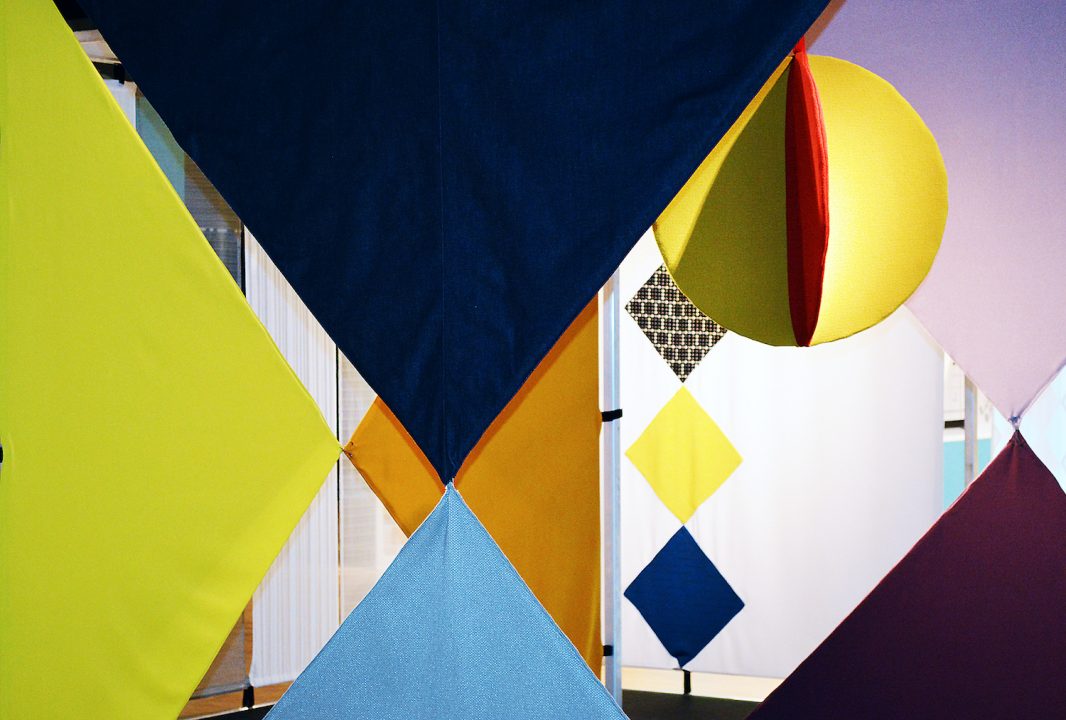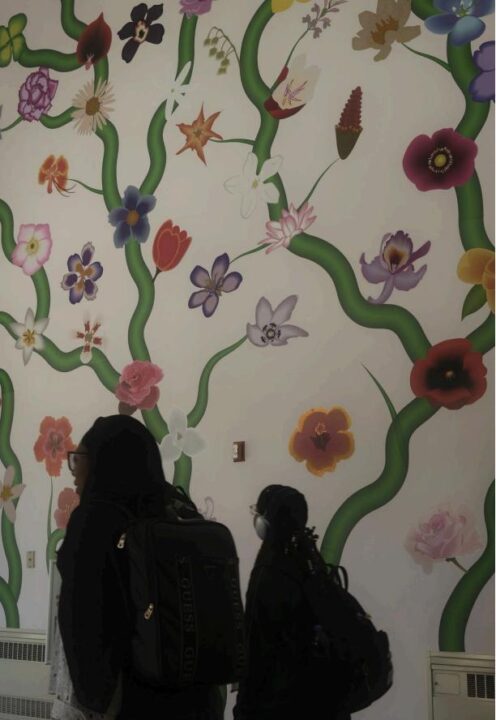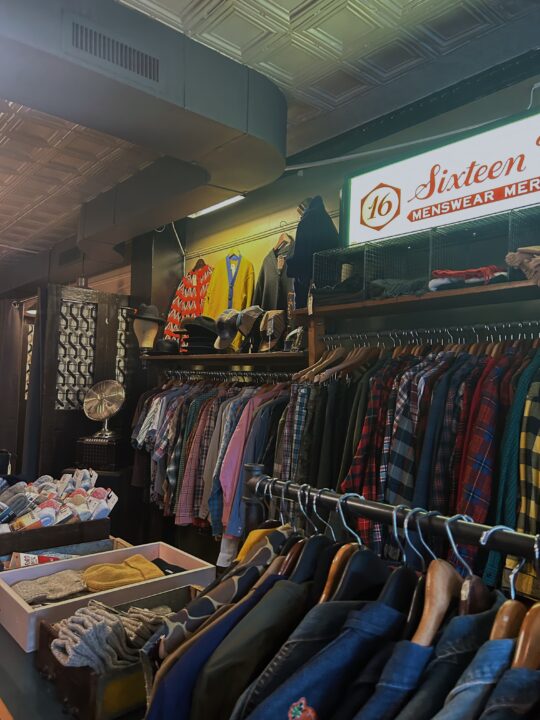In the 1950s, Europe was recovering from the largest tragedy the world had ever faced. The ideas of solidarity and peace were on everyone’s minds, no matter how far-fetched.
During this early Cold War era of rebuilding, exhibitions popped up around Europe that shed a new perspective on the American way of life.
American textiles, wallpapers, containers and packaging were artistically showcased by the Traveling Exhibition Service in 1950s France and Germany, promoting the ‘American course’ of peace and prosperity on behalf of the US State Department.
It was this “ad for democracy” that encouraged freedom and more progressive ways of life that contrasted the rising communist environment in the world, explained Dr. Matthias K. Gobbert, a UMBC professor of mathematics.
Margaret Re, a UMBC associate professor of visual arts, was curious about these events and wanted to bring this 1950s exhibition of world optimism and unity to the US for the first time ever.
Her research as the curator of the new exhibition in UMBC’s Center for Fine Art, Design and Visual Culture led her to give new life to those original European exhibitions that have never before been seen in America.
Visitors to “A Designed Life” in the CADVC can look at different textile designs from various artists, photographs of original 1950’s American goods packaging, vibrant wallpaper designs, colorful mosaics and more.
The three main artists highlighted in this exhibition are Tom Lee (American wallpaper), Will Burtin (American containers and packaging) and Florence Knoll (American textiles).
Their works are on display in three different sections around the CADVC, each with primary source recordings in the background for visitors to listen to while looking at the art.
Another aspect of post-WWII Europe covered in this exhibit is the idea of peace and collaboration that arose from the enactment of the Marshall Plan, or the European Recovery Program.
Eighteen out of the twenty-five posters submitted by the fourteen countries who participated in the plan and the 1950 Intra-European Cooperation for a Better Standard of Living Poster Contest are on display, covering an entire wall of the CADVC.
The posters read phrases like “ein neues Europe (a new Europe)”, “whatever the weather, we only reach welfare together”, “cooperation in intereuropeenne”, “reconstruire l’Europe” and “cooperation means prosperity”.
In the original 1950s exhibition, it struck the European visitors how similar the patterns and designs were. Many of the artists featured in the CADVC exhibition had emigrated to the US after the war and had clear, distinct ties to Europe that are evident in their work, explained Re.
At Wednesday’s opening reception, the CADVC was full of UMBC students and faculty, marveling at this glimpse into the past. It is clear that a lot has changed since those calls for world solidarity and rebuilding that resounded in the post-WWII west.
It begs the question of what has become of these ideas in our modern world, whether we are closer to world peace today or not. “A Designed Life: Contemporary American Textiles, Wallpapers and Containers & Packages, 1951-1954” will remain on exhibit in the CADVC until Dec. 8.


